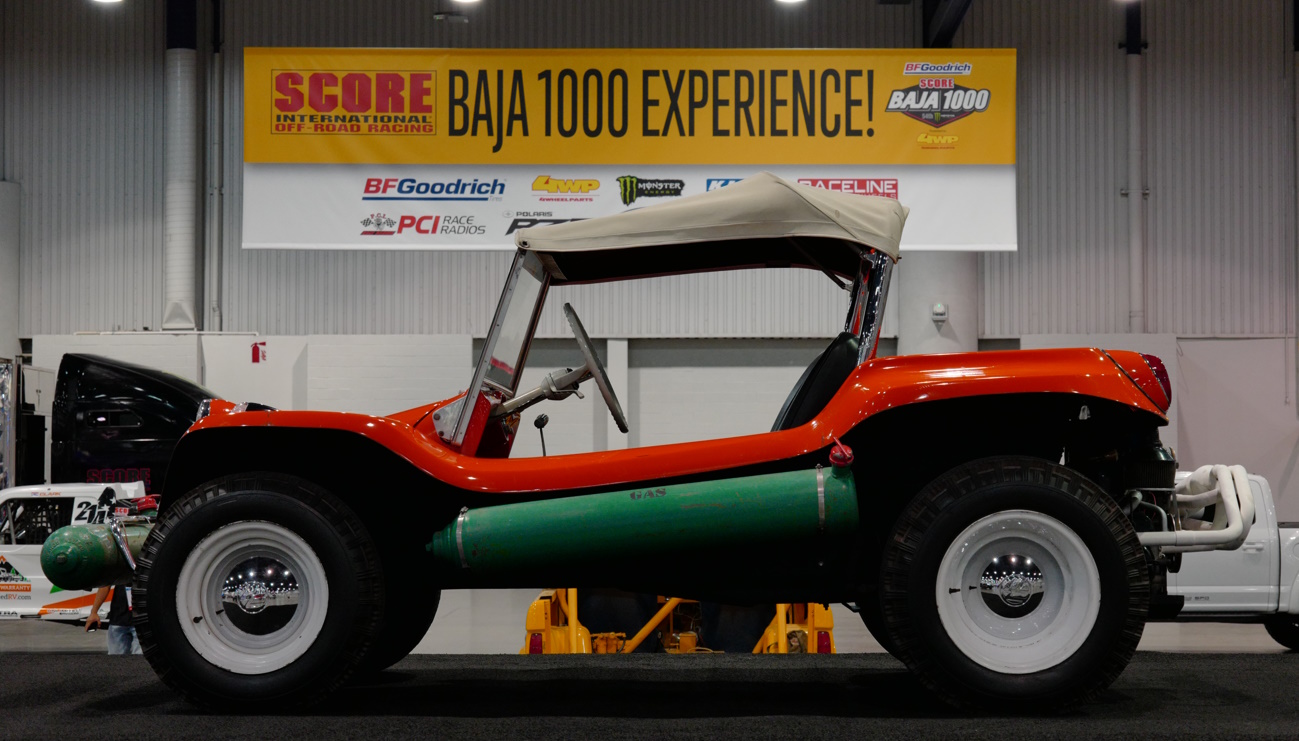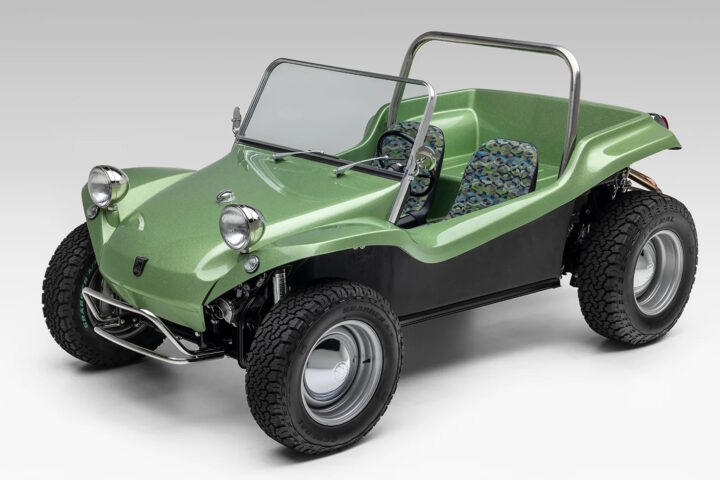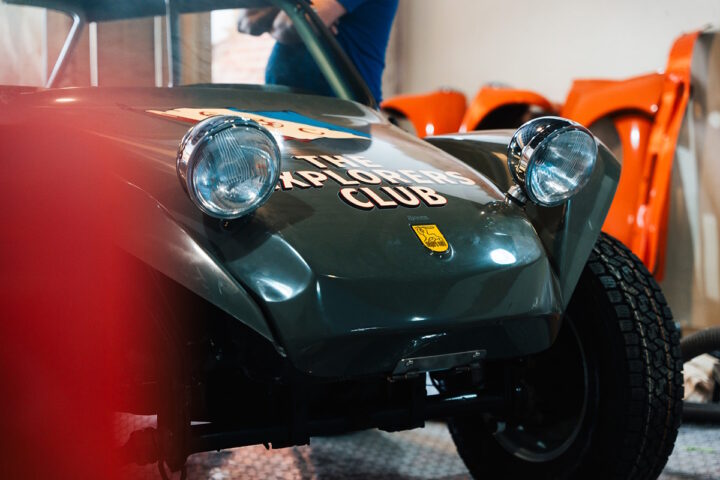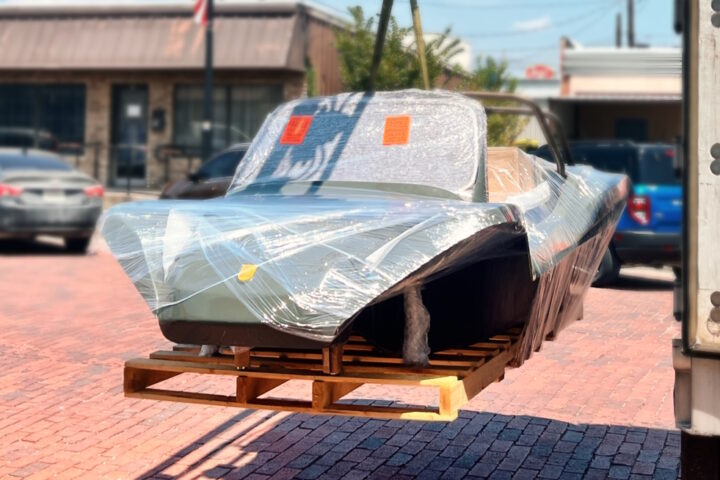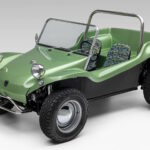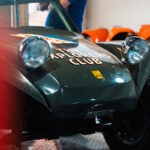The Meyers Manx dune buggy is an iconic recreational vehicle that gained fame in the 1960s. Designed by Bruce F. Meyers, a Californian engineer, artist, boat builder, and surfer, this unique vehicle was initially created for desert racing. Here’s an in-depth look at the Meyers Manx:
Bruce Meyers constructed the first Manx, called “Old Red,” in his Newport Beach garage between late 1963 and May 1964. The vehicle was based on a shortened Volkswagen Beetle chassis and featured a monocoque fiberglass shell. Its design fused the body, fenders, and pan while retaining the engine, transmission, and suspension of the VW Beetle.
The name “Manx” is inspired by the tailless Manx cat breed, known for its agility and turning ability. The Meyers Manx logo prominently features a stylized Manx cat, resembling a heraldic lion with a sword.
Bruce began selling the Meyers Manx as a kit car in 1964, the Manx quickly dominated dune racing and off-road events, leading to the formation of the National Off-Road Racing Association (NORRA). The Meyers Manx was celebrated on the cover of Hot Rod magazine in August 1966. In 1967, it made headlines by winning the Mexican 1000 race, defeating motorcycles, trucks, and other cars. The little kit car was a cultural phenomenon, a father and son could order a kit and build it in their garage, and Steve McQueen would drive a customized Manx in the 1968 film The Thomas Crown Affair.
Roughly 6,000 original Meyers Manx dune buggies were produced. However, the design’s popularity led to numerous imitations, estimated at around a quarter of a million copies produced worldwide. Bruce Meyers and his company lost legal battles against copycats, opening the doors for the industry he had initiated.
Often Copied The Meyers Manx Is What Most People Think Of When You Say Dune Buggy
To stay competitive, Meyers introduced the Meyers Manx Mk II design, which was harder to replicate. The company also produced other Beetle-based vehicles, including the Manx SR, the Meyers Tow’d, the Tow’dster, and the Meyers Resorter. The Tow’dster served as a compromise between a dune-capable vehicle and a utilitarian street rod. The company ceased operation in 1971 due to financial troubles, including issues with the Internal Revenue Service, but by that time Bruce Meyers had already left the company.
In 2000, Bruce Meyers founded Meyers Manx, Inc., based in Valley Center, California, and began producing the Classic Manx series and, in 2002, the Manxter 2+2 and Manxter DualSport. These modernized versions offered improvements and catered to different preferences. The company would sell kits until November 2020, when Bruce and Winnie Meyers sold their business to Trousdale Ventures, leading to the establishment of Meyers Manx, LLC. Bruce would pass away in California in 2021, but the Meyers Manx remains a symbol of innovation and adventure in the automotive world, still producing a version of the classic Manx which is sold as a kit, as well as exciting new versions of the Manx including all-electric versions.
The Meyers Manx continues to hold a special place in the history of recreational vehicles, known for its groundbreaking design and contribution to off-road racing. Its legacy lives on through enthusiasts and the modern versions produced by Meyers Manx, LLC.

